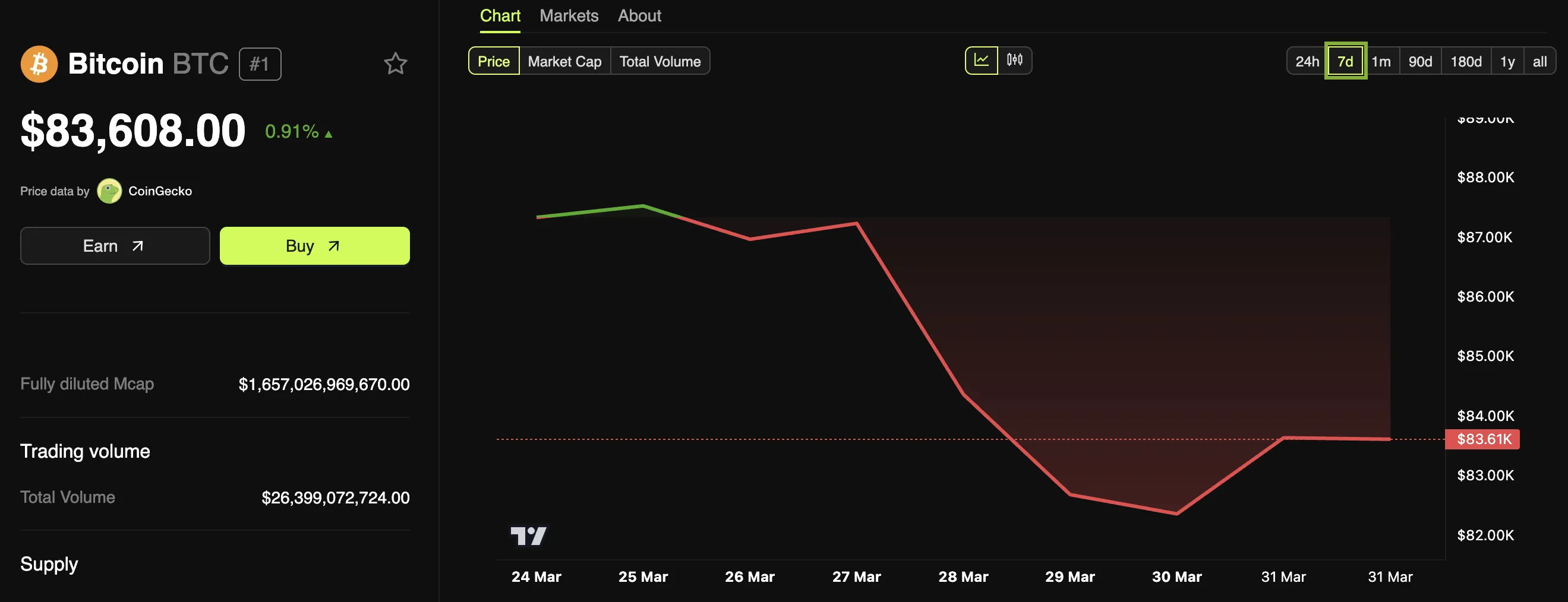Bitcoin
NYSE May Extend Bitcoin ETFs Trading to 22 Hours Daily


The New York Stock Exchange (NYSE) announced plans to extend weekday trading hours on its NYSE Arca equities exchange, potentially accommodating the surging global demand for US-listed securities, including Bitcoin ETFs (exchange-traded funds).
NYSE Arca is the leading US exchange for listing and trading ETFs. These financial instruments become especially pertinent as investor interest in Bitcoin ETFs and other cryptocurrency-related assets rises.
Bitcoin ETFs Could Trade for 22 Hours A Day
The proposal, which is pending regulatory approval, would see trading extend to 22 hours a day, 5 days a week. The sessions could run from 1:30 a.m. to 11:30 p.m. Eastern Time (ET). This extended schedule would position NYSE Arca as a nearly around-the-clock trading platform.
Traders from various time zones would have increased access to US-listed stocks, crypto ETFs, and closed-end funds. The NYSE believes the expansion will allow investors to trade with more flexibility and will better reflect the global, real-time nature of contemporary financial markets.
“As the steward of the US capital markets, the NYSE is pleased to lead the way in enabling exchange-based trading for our US-listed companies and funds to investors in time zones across the globe,” an excerpt in the announcement read, citing Kevin Tyrrell, Head of Markets, New York Stock Exchange.
This announcement caught the attention of ETF expert Eric Balchunas. The NYSE’s proposal to extend its hours comes as interest in Bitcoin ETFs has intensified following the landmark approval in January. Crypto ETFs offer a regulated option for investors who may be wary of the volatility or complexity associated with holding actual digital assets.
Read more: How To Trade a Bitcoin ETF: A Step-by-Step Approach.
In recent months, the US Securities and Exchange Commission (SEC) has also approved the launch of Bitcoin ETF options. These moves are widely seen as a significant endorsement of crypto-backed investment vehicles.
At the same time, Bitcoin’s reputation as a store of value, especially amid economic uncertainty, has bolstered its popularity and appeal to a broader investor base. The demand for extended trading, therefore, reflects the momentum seen across the cryptocurrency market.
Implications for US Financial Markets and Beyond
Currently, traditional US equity markets operate from 9:30 a.m. to 4:00 p.m. ET. However, the crypto market’s constant 24/7 trading highlights a discrepancy that could influence the US market’s ability to compete on a global scale. Extending trading hours for Bitcoin ETFs could allow more seamless participation from global investors.
This applies particularly in Europe and Asia, which are often limited by current trading windows. The NYSE’s proposed plan could meet this demand and establish a more inclusive trading environment that acknowledges the increasingly digital and decentralized nature of global finance.
However, this plan still requires regulatory approval, which will be crucial in ensuring the change aligns with US securities laws. To support the extended trading, the NYSE will also seek approval from US securities information processors to ensure real-time data transparency for the extended hours.
“The NYSE plans to file updated rules with the Securities and Exchange Commission for the extended trading. Trades taking place on NYSE Arca during these additional extended hours will continue to be cleared by the Depository Trust & Clearing Corporation, which recently announced plans to extend its hours of operation,” the announcement added.
Read more: Crypto ETN vs. Crypto ETF: What Is the Difference?
If approved, the plan will open a new chapter for Bitcoin ETFs, enhancing liquidity and making these assets more accessible to investors worldwide. As the proposal awaits regulatory approval, the industry anticipates how such a shift could redefine investor participation. For one, it could drive broader adoption of both traditional and digital financial assets globally.
Disclaimer
In adherence to the Trust Project guidelines, BeInCrypto is committed to unbiased, transparent reporting. This news article aims to provide accurate, timely information. However, readers are advised to verify facts independently and consult with a professional before making any decisions based on this content. Please note that our Terms and Conditions, Privacy Policy, and Disclaimers have been updated.
Bitcoin
$500 Trillion Bitcoin? Saylor’s Bold Prediction Shakes the Market!


Michael Saylor, one of the most outspoken supporters of Bitcoin, is back and bolder than ever. In a recent statement, the former MicroStrategy CEO predicted that the alpha coin will potentially hit a $500 trillion market cap. Saylor’s bold prediction for the world’s top digital asset comes during the intensified push for a Strategic Bitcoin Reserve (SBR).
In his latest pro-crypto statement, Saylor argued that the digital asset will “demonetize gold”, then it will demonetize real estate, which he calculated as 10x more than gold. To summarize his argument, Saylor further states that Bitcoin will demonetize “all long-term store of value”.
Push For SBR Gains Ground
Saylor’s latest statement comes as Congress intensifies its efforts to build the country’s BTC holdings. United States President Donald Trump formalized the plans to build crypto holdings through an executive order to establish a strategic crypto reserve that will initially include $17 billion worth of BTC that the country currently controls.
Michael Saylor: Bitcoin Headed to $500 Trillion
₿
– At Digital Asset Summit, MicroStrategy’s Saylor predicted:
• BTC will reach $500T market cap
• It will “demonetize gold, real estate & all long-term stores of value”
– Capital shift: “From physical to digital, from…— AFV GLOBAL (@afvglobal) March 28, 2025
According to the president, additional acquisitions of cryptocurrency are allowed, provided these are done through “budget-neutral” approaches. Senator Cynthia Lummis initially proposed in the Senate, through the Bitcoin Act, the plan to create a Bitcoin reserve. Under the proposal, the administration can purchase 1 million Bitcoin to complement the reserve.
Saylor Explains Crypto’s Role During Blockchain Summit
Saylor’s latest prediction on Bitcoin was made during his appearance at the DC Blockchain Summit. He was joined on stage by Jason Les, the CEO of Rito Platforms, and Lummis, the principal author of the Bitcoin Act.
During the program, Saylor was asked about America’s need for Bitcoin. Saylor answered with conviction, saying the rising importance of BTC is inevitable and will happen with the US’ participation. During his talk, he shared that Bitcoin, created by the enigmatic Satoshi Nakamoto, is unstoppable.
Image: Gemini Imagen
Saylor added that the premier digital asset is the next stage in money’s evolution, and it’s currently absorbing value from traditional assets like currency reserves and real estate.
Saylor Predicts Top Coin Will Reach $500 Trillion In Market Cap
During his talk, Saylor predicted that BTC will eventually grow from $2 billion to $20 billion, which can hit $200 billion and beyond. Finally, he thinks the asset can achieve a $500 trillion market capitalization, reflecting more than 29,000% increase from its current market capitalization of $1.67 trillion.
Saylor’s recent bold prediction aligns with his firm conviction and support for the asset. He argues that Bitcoin’s unique features, its decentralized nature and fixed supply, make it a perfect hedge against economic uncertainties like inflation.
Featured image from Gemini Imagen, chart from TradingView

Editorial Process for bitcoinist is centered on delivering thoroughly researched, accurate, and unbiased content. We uphold strict sourcing standards, and each page undergoes diligent review by our team of top technology experts and seasoned editors. This process ensures the integrity, relevance, and value of our content for our readers.
Bitcoin
Big Bitcoin Buy Coming? Saylor Drops a Hint as Strategy Shifts


A top executive of Strategy, formerly MicroStrategy, posted a cryptic post on X, fueling speculation that the company might be positioning itself to make another Bitcoin acquisition soon.
Strategy Executive Chairman Michael Saylor suggested in an X post that the company would purchase additional Bitcoins to boost its current BTC holding of $42 billion.
Saylor To Buy More Bitcoin
In a typical Saylor fashion, the Strategy top honcho disclosed the company’s BTC investment portfolio tracker, an indicator that the company is planning an upcoming Bitcoin acquisition.
Needs even more Orange. pic.twitter.com/lV5qgUP6oY
— Michael Saylor
(@saylor) March 30, 2025
“Needs even more Orange,” Saylor said in the post, referring to the orange circles in the graph (below), which represents the company’s Bitcoin purchases since September 2020.
Once again, Saylor’s post intrigued the crypto community because many believe the graph conveys a message that Strategy will buy more BTC soon.
Strategy Stockpile: Over $40B BTC
According to Saylor, Strategy’s Bitcoin holding now stands at more than $42 billion. Despite the company’s already huge investment in BTC, it seems the company will continue to increase its holdings, believing in the value of crypto.
Strategy has made great strides in building its BTC reserve from its initial Bitcoin purchase of 21,454 coins worth $250 million in August 2020.
On March 17, the company announced its latest acquisition of 130 Bitcoins for about $10.7 million in cash, with an average price of around $82,981 per coin.
Meanwhile, Onchain Lens reported on Sunday that Strategy moved a considerable number of its coins to new addresses.
“Strategy (formerly MicroStrategy) transferred 7,383.25 $BTC worth $612.92M to three new addresses on March 30,” Onchain Lens said in a post.
Analysts believe the company is influencing the crypto market to strengthen its position, as its chairman has consistently urged others never to sell their Bitcoin.
Strategy (formerly #MicroStrategy) has transferred 7,383.25 $BTC worth $612.92M into 3 new addresses.https://t.co/8KVn8hYNDL pic.twitter.com/g92HZCvoLp
— Onchain Lens (@OnchainLens) March 30, 2025
Fueling BTC Adoption
Many market observers argued that Saylor’s BTC investment strategy might have driven crypto adoption. Ironically, Saylor was pessimistic about Bitcoin’s future in 2013, predicting that the flagship crypto would fail.
However, in 2020, Saylor became one of Bitcoin’s staunch advocates and has now been preaching the merits of the firstborn crypto, urging companies to acquire Bitcoin.
For example, Visa planned to let its customers spend digital assets directly at 70 million merchants. At the same time, financial institutions such as JPMorgan and Morgan Stanley have begun offering crypto investments to wealthy clients and institutional investors.
Featured image from Times Now, chart from TradingView

Editorial Process for bitcoinist is centered on delivering thoroughly researched, accurate, and unbiased content. We uphold strict sourcing standards, and each page undergoes diligent review by our team of top technology experts and seasoned editors. This process ensures the integrity, relevance, and value of our content for our readers.
Bitcoin
Strategy Adds 22,048 BTC for Nearly $2 Billion

Michael Saylor announced that Strategy purchased nearly $2 billion worth of Bitcoin. This is a massive leap over last week’s purchase, which was already quite substantial.
Nonetheless, the firm was only able to make this acquisition thanks to major stock offerings. Bitcoin’s price has been sinking over the last few weeks, and this could mature into a potential liquidation crisis.
Strategy Maintains Bitcoin Purchases
Since Strategy (formerly MicroStrategy) began acquiring Bitcoin, it’s become one of the world’s largest BTC holders. This plan has totally reoriented the company around its massive acquisitions, inspiring other firms to take up the same plan.
Today, the firm’s Chair, Michael Saylor, announced another purchase, much larger than the last few.
“Strategy has acquired 22,048 BTC for ~$1.92 billion at ~$86,969 per bitcoin and has achieved BTC Yield of 11.0% YTD 2025. As of 3/30/2025, Strategy holds 528,185 BTC acquired for ~$35.63 billion at ~$67,458 per bitcoin,” Saylor claimed via social media.
Strategy’s latest Bitcoin acquisition, worth just shy of $2 billion, is a major commitment. In February, the firm made a similar $2 billion purchase, and it was followed by a tiny $10 million buy and a $500 million one. The $500 million purchase, which took place on March 24, only happened thanks to a huge new stock offering. This move further cements Strategy’s faith in BTC.
By making these billion-dollar buys, Strategy is able to buttress the entire market’s confidence in Bitcoin. However, investors should be aware of a few potential cracks.
First of all, Bitcoin’s performance is a little subpar at the moment. Despite hitting an all-time high recently, Bitcoin is having its worst quarter since 2019, and there is not much forward momentum.

This could cause a unique problem for the company. Since Strategy is a cornerstone of market confidence, it is unable to offload its assets without jeopardizing Bitcoin’s price.
The firm’s debts are growing at a fast rate, and this could have dangerous implications if Bitcoin keeps falling. Strategy could be forced to liquidate, even if that seems unlikely now.
Still, it’s important to remember that these are only possible scenarios. Strategy has maintained its consistent Bitcoin investments for nearly five years, and it’s paid off tremendously well. However, if it keeps taking on billions in fresh debt obligations, this faith will turn into a gamble with very high stakes.
Disclaimer
In adherence to the Trust Project guidelines, BeInCrypto is committed to unbiased, transparent reporting. This news article aims to provide accurate, timely information. However, readers are advised to verify facts independently and consult with a professional before making any decisions based on this content. Please note that our Terms and Conditions, Privacy Policy, and Disclaimers have been updated.
-

 Market23 hours ago
Market23 hours agoHedera (HBAR) Bears Dominate, HBAR Eyes Key $0.15 Level
-

 Market22 hours ago
Market22 hours agoThis is Why PumpSwap Brings Pump.fun To the Next Level
-

 Market21 hours ago
Market21 hours agoCardano (ADA) Whales Hit 2-Year Low as Key Support Retested
-

 Market13 hours ago
Market13 hours agoBitcoin Price Battles Key Hurdles—Is a Breakout Still Possible?
-

 Bitcoin11 hours ago
Bitcoin11 hours agoBig Bitcoin Buy Coming? Saylor Drops a Hint as Strategy Shifts
-

 Market20 hours ago
Market20 hours agoTop 3 Made in USA Coins to Watch In April
-

 Market18 hours ago
Market18 hours agoEthereum Price Faces a Tough Test—Can It Clear the Hurdle?
-

 Bitcoin10 hours ago
Bitcoin10 hours ago$500 Trillion Bitcoin? Saylor’s Bold Prediction Shakes the Market!




















